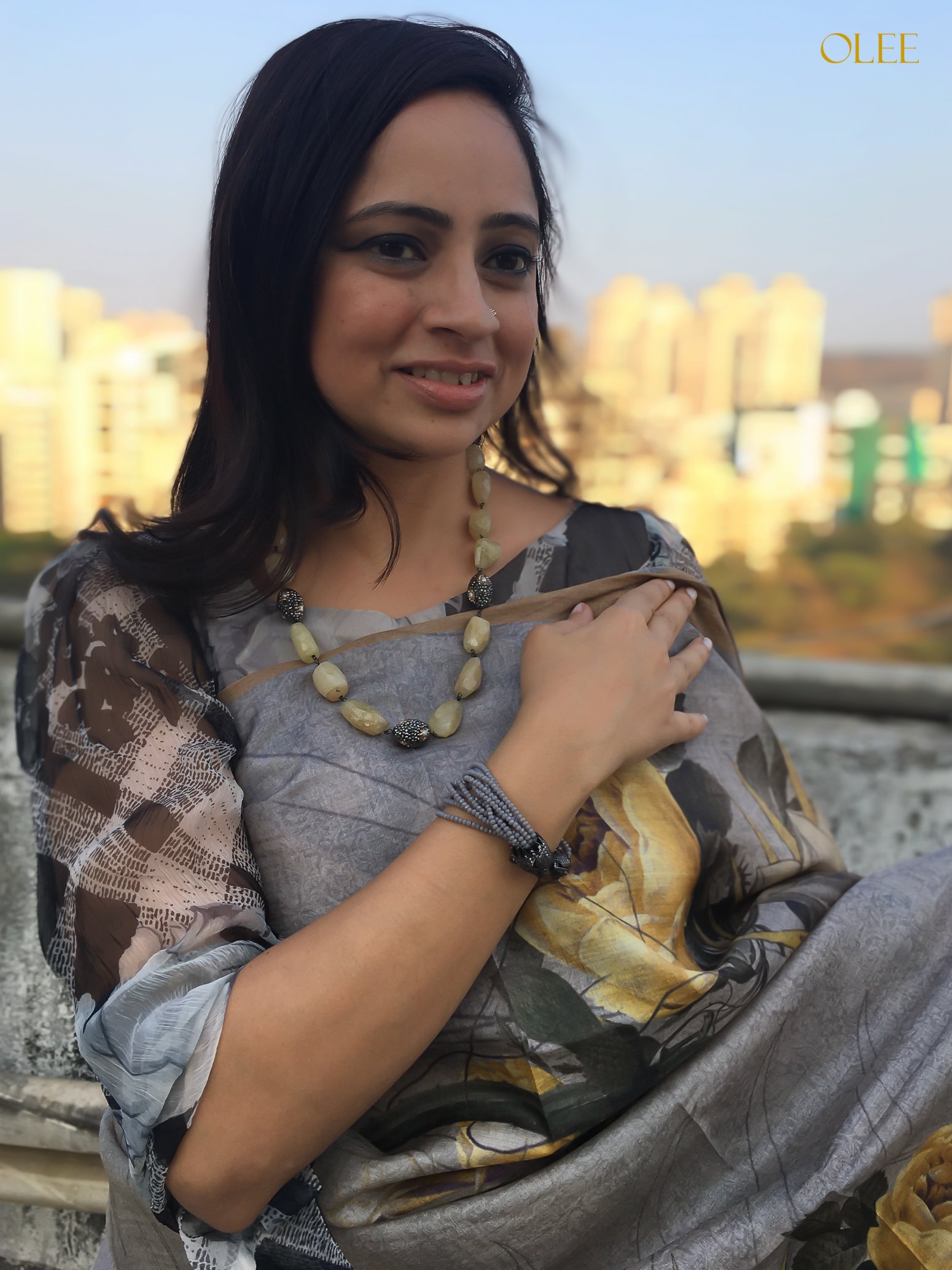Inspiration
Idling in the afternoon sun listening to the koo-hoo of the Koel brings back sun burnt memories from childhood.
Indian summer looks abrupt and crisp in a cloak of grey and ash. Parched earth begs heaven for drops of mercy. Beautiful flowers swing in a summer waltz. Someone sits in her nook humming a summer song like a koel’s wandering voice – clear and shrill. Etching her name on the wooden railing, hoping her unheard song, like a Koel’s call sailing from unknown, will be heard by a stranger one summer noon. She has not heard his voice or seen his face but hopes to embrace faith and what heart wishes for soon.
Sure as summer, vivid and vibrant sashaying like the splendor of a golden sun, dazzle in this ash-grey-charcoal and yellow drape. A sophisticated choice for a brunch or even an evening soiree. This saree is for all you April’s darlings (Koels).
Details
Length: 5.5 m; Width: 47 inches
Blouse Piece: Included with the saree of length 90-100 cm. The blouse worn in the photographs is only for styling.
Maintenance: Dry Clean and light iron
Disclaimer: The pictures are clicked in natural light. Colour may vary slightly from the image. Since these products are purely hand worked, there may be variations in the weave, colours and prints. Please accept them as beauty of a hand-made product.
Description
Fabric:
The prints get life on a silk blend of pure tussar and organza. The resulting silk is light and airy and easy to carry. It does not crush easily.
Printing:
The detailed design and the vibrancy of the shades can only be achieved by quality digital prints.
Digital textile printing begins with the art work. We first create an image either by hand work or directly on the computer and convert it to a digital format. Digital textile printing uses large scale inkjet technology and dye (instead of ink).We first pretreat the fabric with liquid solutions that prepare it to accept the dye and better absorb the color. Then the fabric is fed through the printer, which sprays the dye onto the textile with tiny droplets. The final step is fixing the fabric, a process that ensures the permanency of the design. Depending on the type of textile and type of dye, fixing may involve steam, dry heat, or pressure or all a combination of these processes.













